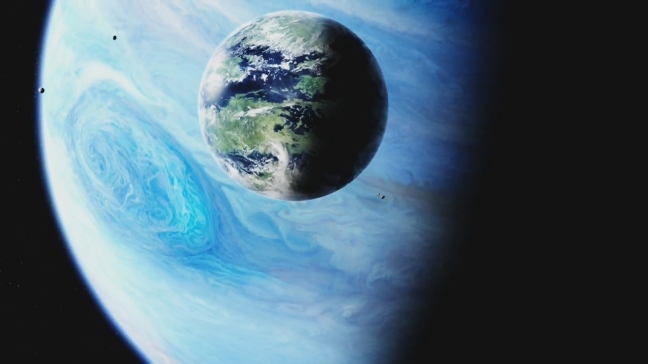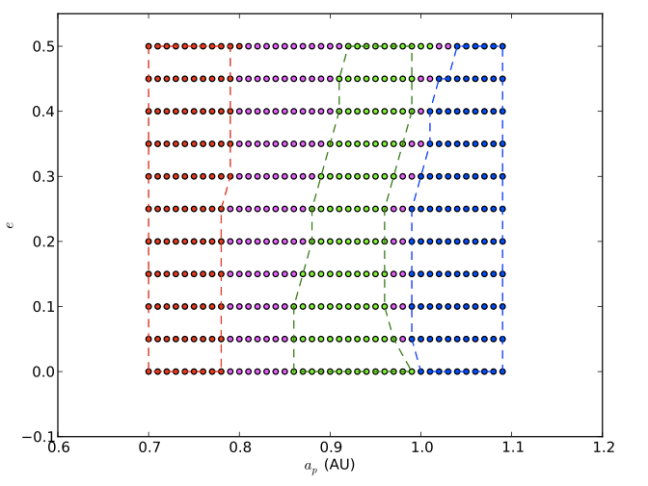The search for life in the Galaxy will soon take on a new dimension. We’ve been searching for exoplanets in the habitable zone of their parent star. We’ve even begun figuring out how this habitable zone changes when more stars are involved. Now, the promise of exomoons puts a new spin on the habitable zone concept.

The habitable zone for an Earthlike planet around a single star is conceptually simple. Get too close to the star, and the planet gets too hot, losing its precious moisture and becoming a charred, lifeless rock. Get too far away from the star, and even with a greenhouse effect turned up to maximum, the water on the surface freezes and animal life perishes. Somewhere in between, the planet can boast liquid water on its surface, and provided the chemistry is right, a healthy atmosphere can be maintained. This habitable zone is a shell around the star, which the planet needs to be inside (at least most of the time) for the planet to be “habitable”.
This habitable zone is determined entirely by the star’s radiation (and the planet’s response to that radiation). Now if that planet is in fact a moon, then the situation gets more complicated. There are extra sources of energy – the moon can be heated directly by the planet’s gravitational field, if the moon’s orbit is elliptical. This is called tidal heating, and we see it in action in Jupiter’s moons. Io is a volcanic nightmare thanks to this heating, but Europa seems to have a warm water ocean under its thick icy crust, that could support life (and it’s about time we visited).

There are also extra ways to lose energy. As the moon orbits the planet, the planet will pass in front of the star, screening off all light on the moon for a short time. If the moon orbits close to the planet, this will happen extremely often.
Exomoons are on the cusp of detection, as I’ve written about before, and their habitable zones could look very different to the exoplanet habitable zones. There’s now a real drive for theoretical astrobiologists to describe these new habitable zones. Some have taken an analytical approach – we took a numerical approach. We took a climate model for a planetary system, and converted it into an planetary system with a moon like the Earth. We looked at how the moon’s orbit affected its climate – just changing the direction of the orbit changes the average temperature of the moon, and causes large scale climate fluctuations (and that was without adding tidal heating).
Adding tidal heating often ruins the party. Even making an orbit slightly elliptical will render an Earthlike moon a crispy Io…


The habitable zone for an exomoon is not just about how close it is to the star, but how close it is to the planet. And now that we are beginning to grasp this, we will be able to assess future detections of exomoons for habitability. The number of Galactic holiday destinations just got a whole bigger…
2 thoughts on “What is the Habitable Zone for an Exomoon?”